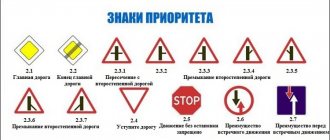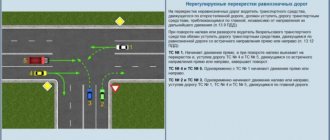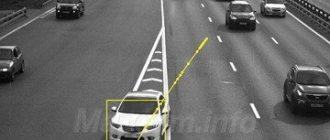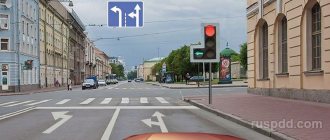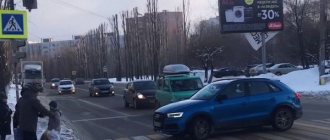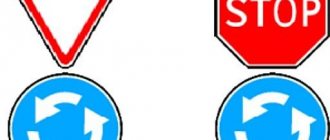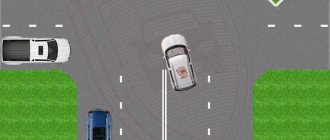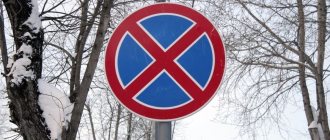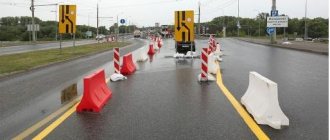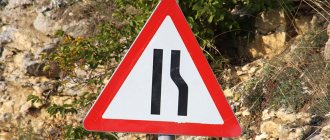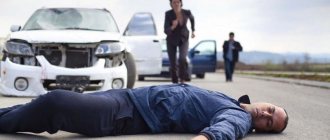A traffic controller is an important participant in traffic. In the modern world, it has become a rare phenomenon, so when faced with it, many do not know how to behave.
To begin with, we will look at general information about the positions and signals of the traffic controller, and at the end of the article we will reinforce them with special rhymes.
The main task of the authorized employee is traffic control and safety.
Its requirements include:
- to pedestrians;
- to vehicle owners.
Traffic controller signals
As a rule, the traffic controller appears when:
- increased traffic volume;
- a difficult situation on the road requiring the presence of a law enforcement representative;
- The traffic light is out of order.
And if the latter communicates information through light signals, then the traffic controller does this using gestures. He indicates in which direction to go and go, allows or prohibits movement, using his hands, a rod and a whistle.
Control and management on the road is carried out by three main positions.
Adjuster:
- Raises his right hand up.
- Spreads his arms to the sides or keeps them down.
- Extends his right hand forward.
In addition to the basic ones, the traffic controller often uses additional gestures. These include any understandable movements: spinning a stick as a requirement to speed up, swinging in the direction in which the driver needs to move, and others.
To maintain a measured movement, the actions of one traffic controller are not enough. Everyone must understand what this or that gesture of a peace officer means. This is a must-learn for driving school students.
But due to the fact that in real life it is not always possible to find application for this knowledge, when meeting with a traffic controller, many experience panic.
What happens if you violate the instructions and gestures of the traffic controller?
Traffic controller on the road. “Mom dear! What to do?"
Surely, almost every driver has encountered a traffic situation when a traffic police officer with or without a baton is working at an intersection overloaded with cars, regulating traffic.
There may be several reasons for this. Perhaps the traffic lights began to malfunction or stopped working altogether. Perhaps this measure is in the nature of an experiment or the intersection is preparing to allow a guarded motorcade to pass through. And so on. Most drivers are accustomed to driving through intersections thanks to permissive traffic lights or priority road signs. This applies to both experienced drivers and those who have recently received a driver’s license and find themselves on a busy road. And unfortunately, not every driver clearly remembers which of the traffic controller’s signals means what. Although everyone studied the traffic rules and passed the exam with flying colors.
Why is the traffic controller more important than the traffic light?
The priority of traffic controller signals over traffic lights, as well as markings and road signs is directly stated in paragraph 6.15 of the traffic rules:
Drivers and pedestrians are obliged to comply with the requirements of signals and orders of the traffic controller, even if they contradict traffic light signals, the requirements of road signs or markings.
Actions of the regulator
Pay attention to what the traffic controller looks like: the traffic rules indicate that he “must be in uniform and (or) have a distinctive sign and equipment . In this case, a wand or other object in the hand is optional. Paragraph 6.10 indicates that “for better visibility of signals, the traffic controller may use a rod or disk with a red signal (retroreflector)” - but may not.
As for the traffic controller’s signals, here again, there are digressions: in addition to those signals that are described in paragraph 6.10 of the traffic rules and which many people forget or have already forgotten, he “can give hand gestures and other signals that are understandable to drivers and pedestrians . Typically, modern traffic controllers act this way, giving intuitive signals to make it easier for drivers to understand. This is done specifically for those motorists who do not remember or understand regulation signals well.
The traffic controller raised his hand up
When starting to exercise his powers, the traffic controller, after giving a sound signal with a whistle, goes out onto the roadway, raising his right hand up. This means that you don’t need to pay attention to traffic lights and priority signs. Only peace officer gestures are valid.
The raised right hand symbolizes a prohibitory signal. Traffic is prohibited for both pedestrians and motorists. In this case, it does not matter whether the traffic controller is standing with his back, face or side.
The gesture is comparable to a yellow traffic light. It can be used to clear the road in emergency situations, such as for an ambulance or police.
There are a number of exceptions when movement can be continued after such a signal from the traffic controller:
A car that has entered the intersection before the traffic controller has time to raise his hand can continue moving, relying on additional gestures of the traffic police officer.
If the signal finds pedestrians on the road, they must immediately leave it or stop in the middle, between the streams of cars.
What is the significance of the signal?
The traffic controller's set contains only three gestures using either the hands or the use of a wand. There are additional movements that are not specified in the rules, but are understandable to everyone.
First
One of the gestures is the right hand raised upward with or without a staff. With this signal, the traffic police officer begins work on the road. The gesture means a demand for all participants to stop moving, regardless of whether they are driving or walking. It also signals that from this second the traffic light and signs have temporarily lost their meaning. And everyone is obliged to follow only the commands of a person in the form of traffic police. It does not matter whether the service officer stands with his back, face or side to the traffic participant.
Seeing his right hand raised up, each of them should:
- stop in front of the stop line if you reach the intersection by car;
- stop moving if you are walking and are ready to step on a zebra crossing;
- stop on the median line of the roadway separating lanes in different directions if you have already walked along a pedestrian crossing.
That is, all participants stop moving at the same time, regardless of whether they see the inspector from the back, front or side. The gesture is also used to clear an intersection so that, for example, an emergency vehicle or a fire truck can pass through it.
The signal does not apply to drivers in several cases:
- When the car has already entered the intersection. Here you can continue the maneuver. And the traffic controller usually makes rotational movements with his baton, urging the driver to quickly free up space and allow the traffic police officer to begin controlling the flow.
- When in order to stop before the stop line in response to the inspector's raised right hand, the motorist would have to use emergency braking. As section 6.14 of the traffic rules dictates, in these circumstances he can also drive further:
Drivers who, when the yellow signal turns on or the traffic controller raises his hand up, cannot stop without resorting to emergency braking in the places determined by paragraph 6.13 of the Rules, are allowed to continue driving.
Second
Another sign given by the traffic controller is arms spread out to the sides or lowered down. Both have the same meaning:
- for those to whom the inspector has turned his face or the back of his head, this is a ban on continuing to move (for motorists and pedestrians);
- For those looking at it from any side, the signal allows them to drive or go straight, as well as turning right.
That is, in the latter case, movement is carried out past the traffic police officer or from him, but in no case towards him.
Third
The last of the gestures used by the traffic police officer establishing traffic order is his right hand extended in front of him.
It can be with a staff or without an auxiliary attribute. This signal has several meanings for people and vehicles moving in different directions:
- Allows right turns for those who need it. But the maneuver is only possible if the inspector is facing the driver. If the latter needs to turn left or drive straight, with this position of the traffic police officer’s body, he should not do this, he will have to wait.
- Allows turning left, right, U-turn and driving straight to those towards whom the left side of the body is turned. The right arm extended forward and the body of the regulator form an angle. If you project it onto the road, then when you turn left and make a U-turn, the car will fit right into it. Those driving straight will pass the inspector behind his back, that is, they will also not break the rules, just like those turning right.
- Prohibits the traffic controller from moving to the back. It doesn't matter whether the driver needs to turn or go straight. Any maneuver in this case will be a violation of the rules. This applies to all types of transport and those who move on their own.
- It is prohibited to walk along a zebra crossing if it is located in front of the inspector controlling vehicle flows, and he himself is turned to the pedestrians with his left or right side. It is possible to move along the passage located behind the back of the service employee in this position of his body.
- Prohibits walking towards a traffic controller standing with his arm outstretched. And it doesn’t matter which side of it the zebra crossing is located.
Not everyone understands how to go around a traffic controller if you need to turn or turn around. The traffic rules only deal with traffic lanes:
8.6. The turn must be carried out in such a way that when leaving the intersection of roadways the vehicle does not end up on the side of oncoming traffic.
This means that the traffic control officer can be passed both in front and behind. The main thing is that there is no traffic in the oncoming traffic.
Reading the signs given by the traffic controller is not so difficult. It is much more difficult for the traffic police officer himself to maintain order on the road, not to confuse gestures, and to avoid creating a dangerous situation. And the driver only needs knowledge of traffic rules, which do not lose their force, understanding of signals and attention.
The traffic controller's arms are extended to the sides or lowered
The position of the hands in this signal does not carry any meaning. Both gestures have the same meaning.
The fact is that on narrow roads when moving large vehicles, a traffic controller with his arms outstretched to the sides can himself become an obstacle.
Depending on his direction, the traffic controller can either prohibit movement or allow it.
Movement towards the chest or back of the traffic controller is prohibited. Thus, the representative of order is symbolized by the red color of the traffic light. This gesture applies not only to car owners, but also to pedestrians.
Movement on the sides of the traffic controller is permitted.
When turning right, car owners are required to give way to pedestrians.
Warning gestures
The main warning signal from the way the traffic controller stands, in the pictures with comments it can be seen that the position of the body can be any, either with your back or facing the traffic participant, or sideways. In this case, the main thing is the movement of the rod, it is raised above the head, the second hand is lowered. The signal means that another command will now be received to change the direction of movement at the intersection. In this case, all drivers who have already started moving and entered the intersection must complete the maneuver, and the rest, regardless of their location relative to the traffic controller, must stop.
Warning signal of a traffic controller with explanations, in the picture there are three different positions of the body, corresponds to a yellow traffic light
The traffic controller extended his right hand forward
This situation can be interpreted in several ways, depending on which side the traffic controller is standing on. The outstretched arm plays the role of a barrier, opening and closing the passage.
Turning to the right is permitted from the side of the traffic controller's chest. But this is not mandatory. If the driver wants to continue in a straight line, he needs to wait for the desired signal. For pedestrians, this position of the employee is a prohibitory signal - they cannot cross the road.
The position when the employee stands on his right side allows pedestrian movement. Car owners are required to stop.
Movement towards the traffic controller's back is strictly prohibited.
The traffic controller, turning on his left side and extending his arm forward, allows cars to move in all directions. Pedestrians can only walk behind him.
Do you want to improve your memory right now? Get a guide to memory development from the Russian record holder! Download the manual for free : “7 effective memorization techniques”
Poems about a traffic controller
A poem about a traffic controller “If the stick looks...”
If the stick is facing your mouth, make a right turn. If the stick points to the right, you have no right to drive. If the stick points to the left, you are the queen of the road. The driver's chest and back are a wall.
There is another poem similar to the previous one.
A poem about a traffic controller: “The stick is pointing upward...”
The stick is pointed upward - she orders everyone to stand. If the stick points to the right, you have no right to drive. If the stick is facing your mouth, make a right turn. If the stick points to the left, ride like a queen. The “bare” chest and back are a wall for the driver!
Explanatory dictionary: “stick” - a striped white and black luminous rod “looks into the mouth” - the traffic controller pressed the rod to himself, with one end to his face “queen” - like in chess, the driver can drive in all directions “wall” - the traffic controller stands towards driver's chest or back, passage is prohibited
Image of a traffic controller
It is quite easy to recognize an inspector on the road who is engaged in regulation. He is dressed in the uniform of an employee of the Ministry of Internal Affairs and may be holding a baton or a reflective disk with a handle. Even if a law enforcement officer does not have anything in his hands, he has the right to regulate vehicle traffic. Additional tools only help to increase the inspector’s visibility, but all instructions from him must be followed unquestioningly.
The traffic controller's instructions take precedence over all elements of the road situation, including signs, markings, traffic lights, etc.
Not only drivers, but also pedestrians should know and perform these gestures. The traffic controller’s signals are easy and simple to learn on your own so that you can interpret them correctly later. To further attract attention, the inspector has the right to use sound, such as a whistle.
